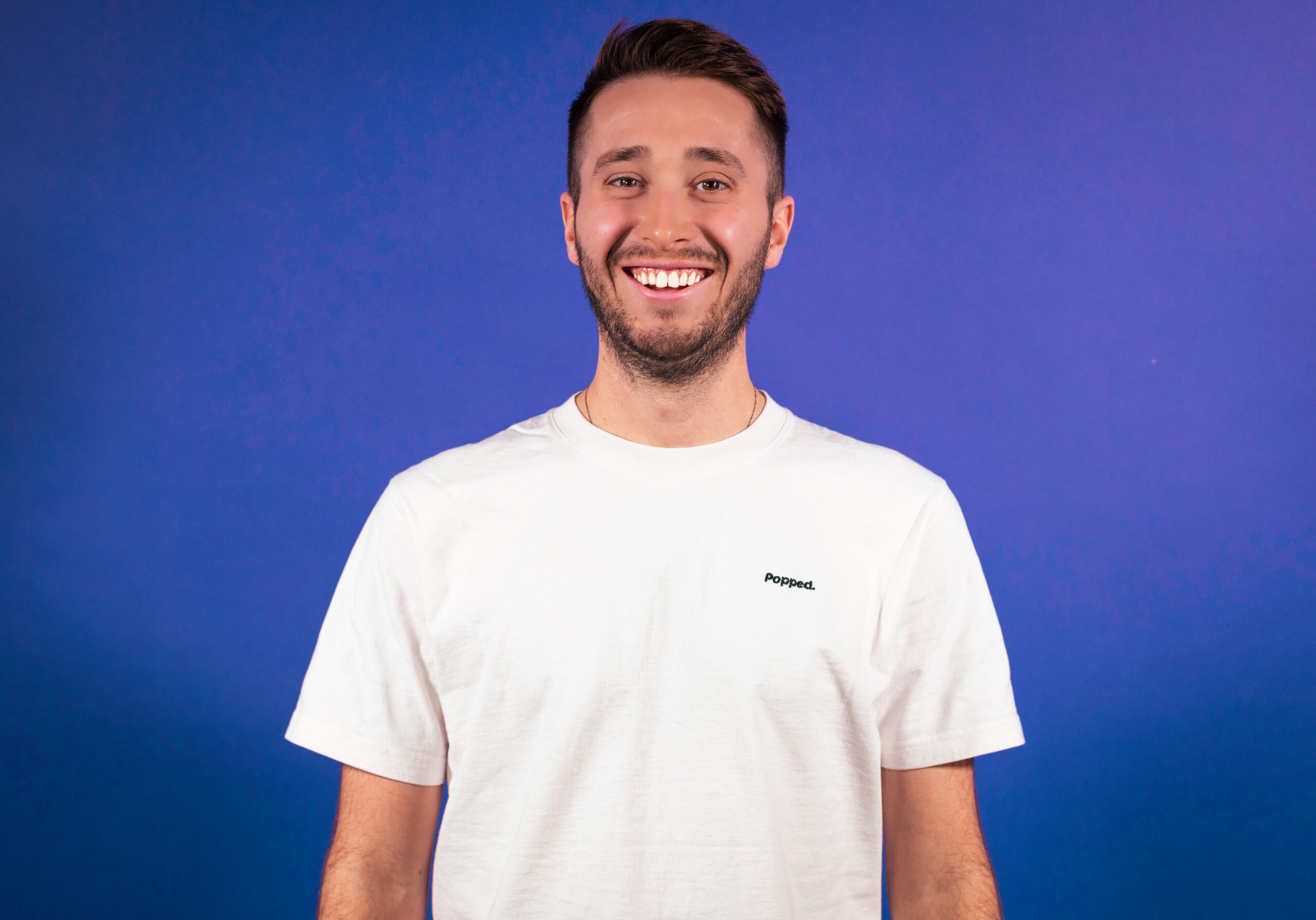The men’s Tour de France has come to an end once more, with the riders rolling onto the Champs-Élysées under the warm Parisian sun.
But as the dust settled on Jonas Vingegaard’s victory, we began thinking about the centenary edition, which, just a decade ago, was won by Chris Froome.
Many things might look the same, but the Tour-winning bike has changed significantly from 2013 to 2023.
From advanced aero shapes and integrated cockpits, to tubeless tyres and 1x, let’s take a closer look at how the bike of the Tour de France champion has evolved from Froome’s Pinarello Dogma 65.1 Think2 to Vingegaard’s Cervélo S5 and R5.
Aerodynamics
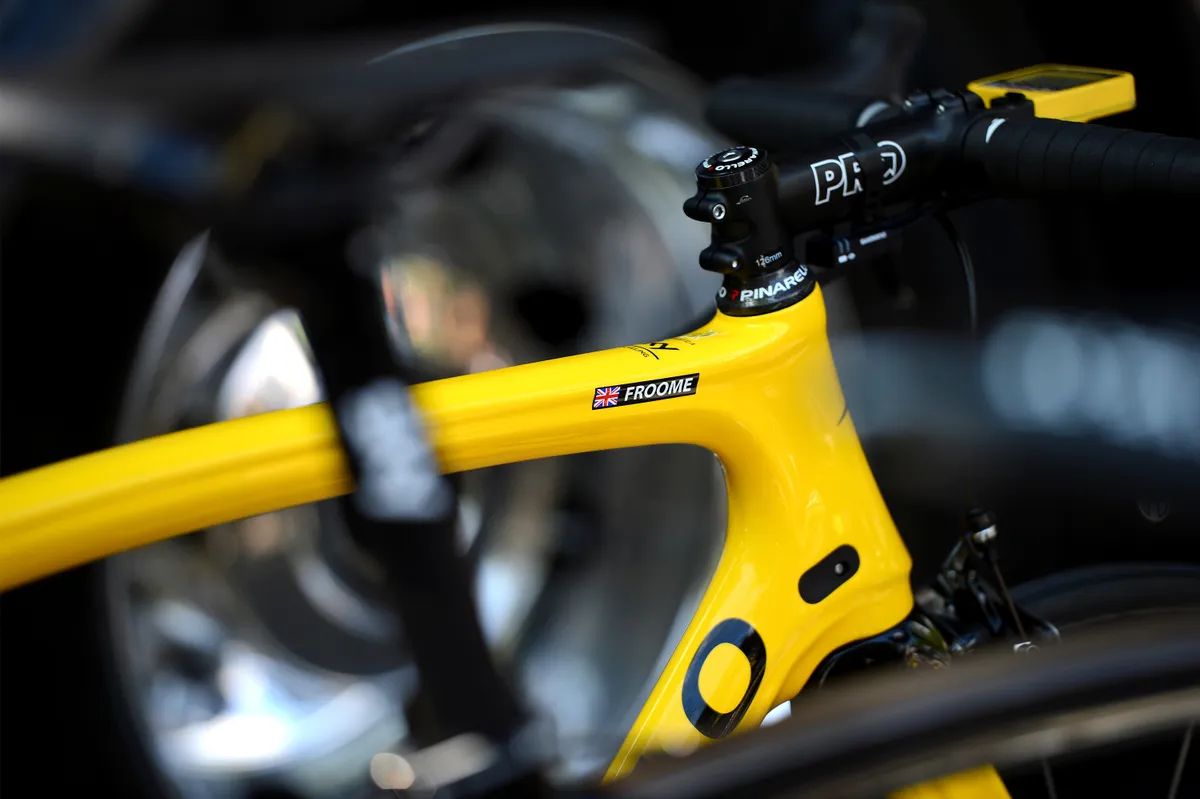
The main change in focus that we’ve seen affect almost everything, in terms of pro cycling tech, is aerodynamics.
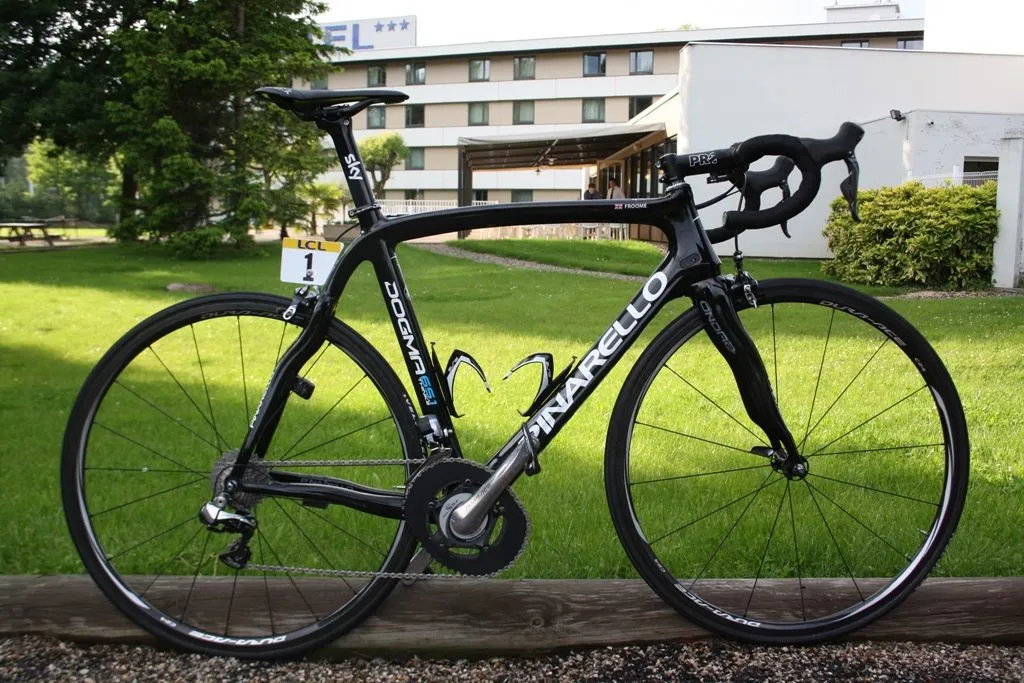
Sure, riders such as Froome were making aero mods to their bikes back in 2013, but their efforts were largely limited to fitting slightly deeper wheels for flat stages.
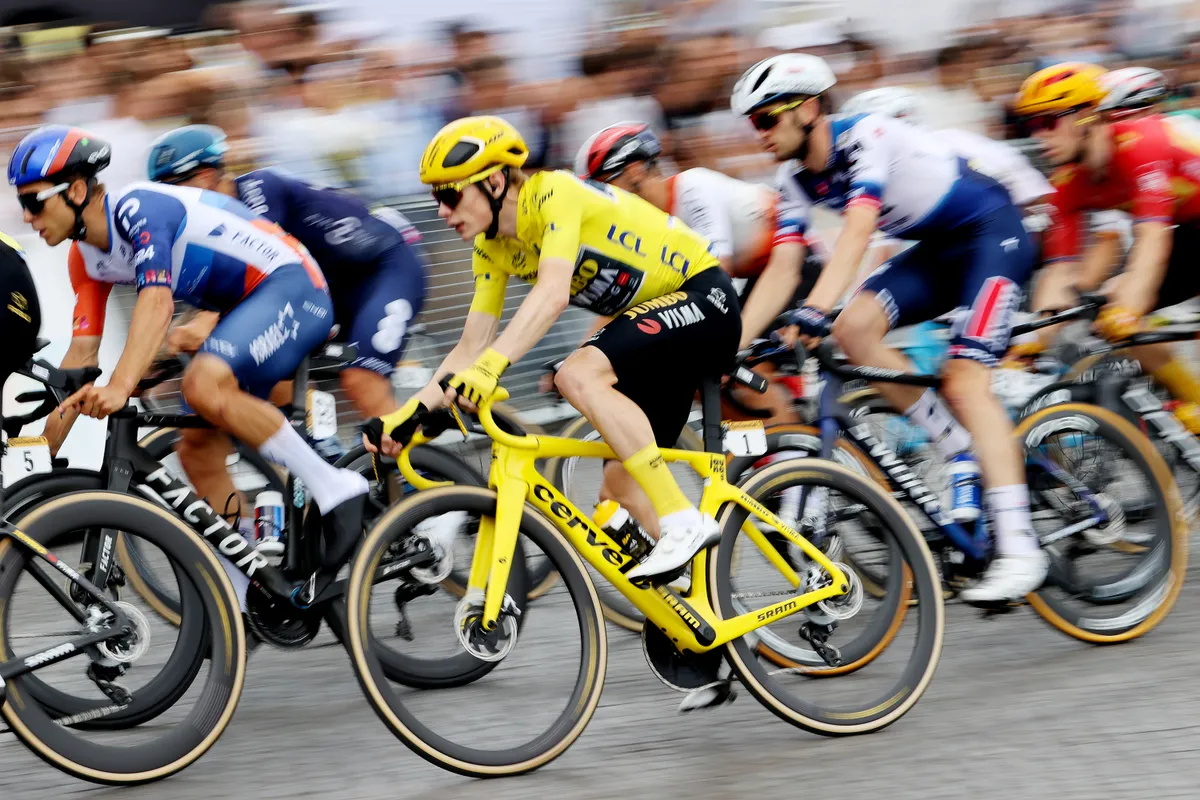
Vingegaard’s bikes, meanwhile, have both been optimised to reduce drag, so let’s look at his frames.
While Froome was limited to just his Pinarello Dogma 65.1 Think2 frame, Vingegaard switched between the Cervélo R5 for the mountains and a Cervélo S5 for the faster days (including a yellow edition of the bike for the final stage, as is customary for the Tour champion – Froome included in 2013).
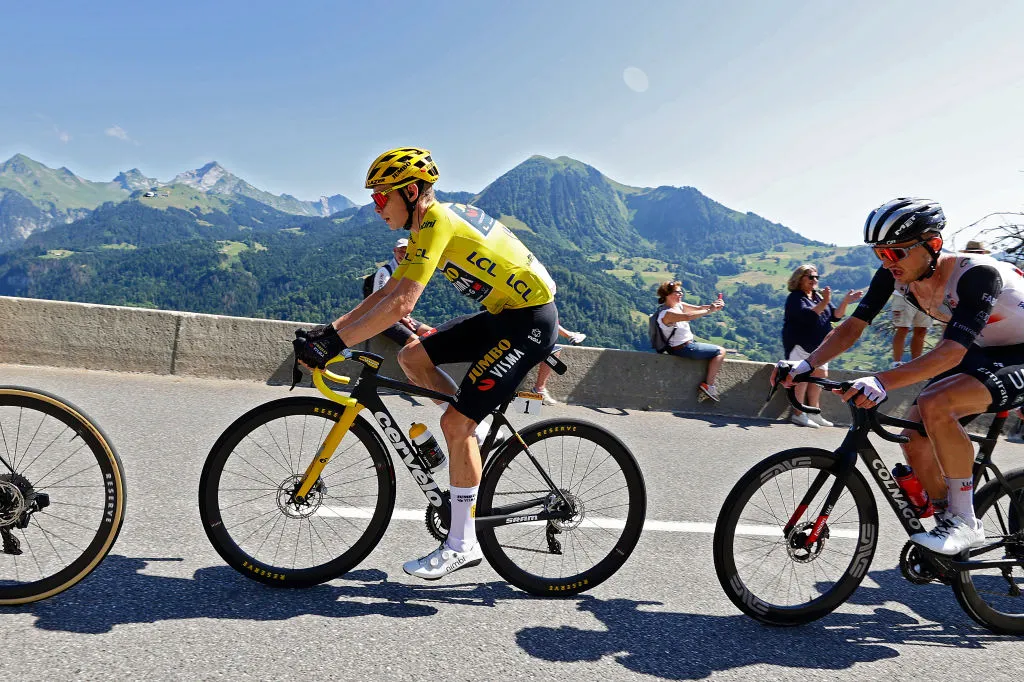
Although the R5 still incorporates aero detailing such as the integrated handlebar, which we’ll discuss later, it’s far more traditional in its shaping, so we’ll focus on the S5 for now.
The S5 is fully optimised for slicing through the wind, with deep truncated aerofoil tube shapes throughout, and Cervélo’s innovative V-shaped stem.
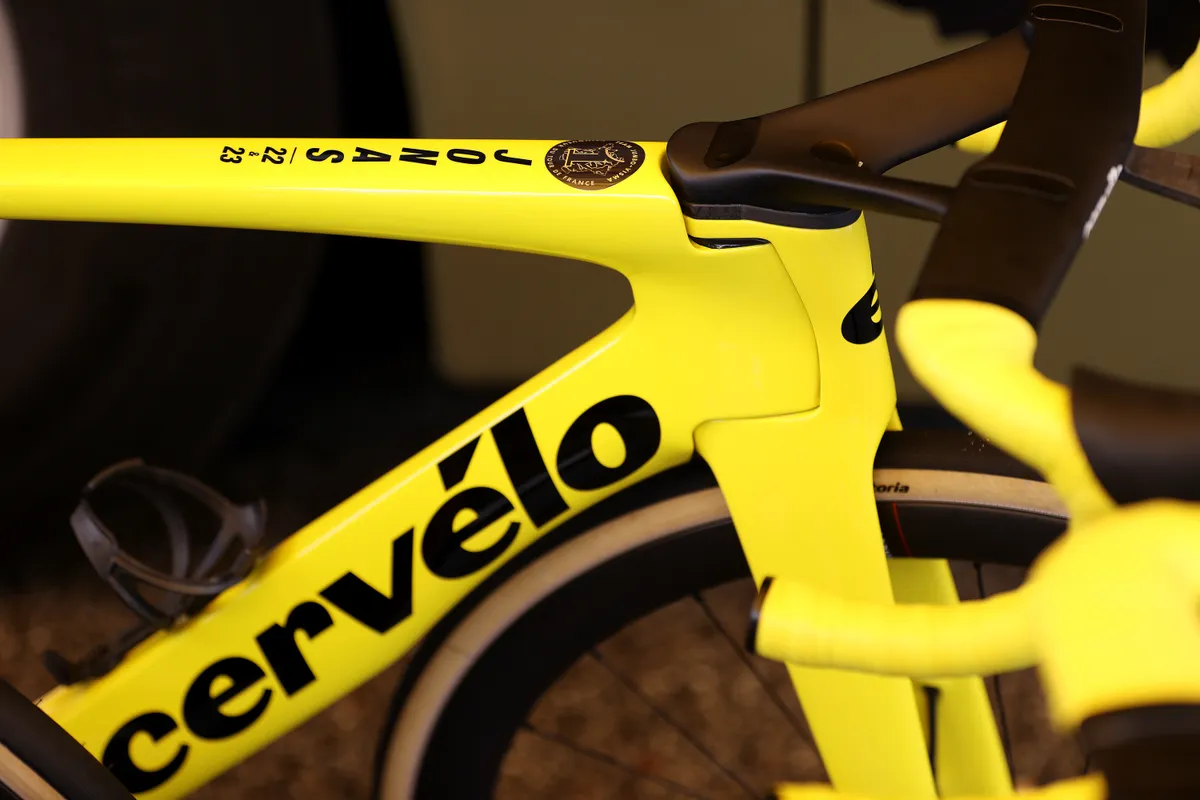
There are even distinct echoes of the Cervélo P5 time trial bike in the S5’s design, underlining its focus on aerodynamic efficiency.
The seat tube hugs the rear wheel with barely enough room for the light to pass through, while up front the head tube and integrated fork are sculpted to smooth the airflow.
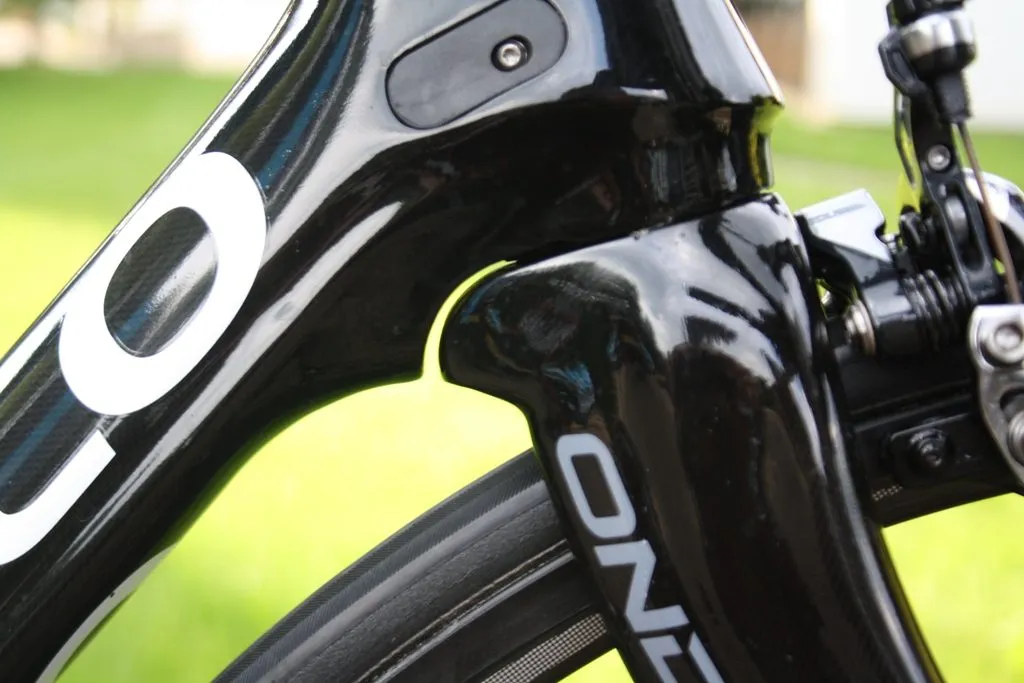
Froome’s 2013 Dogma, meanwhile, featured far less aero profiling of the tube shapes, along with seatstays that flowed directly into the top tube. There were no dropped stays in sight.
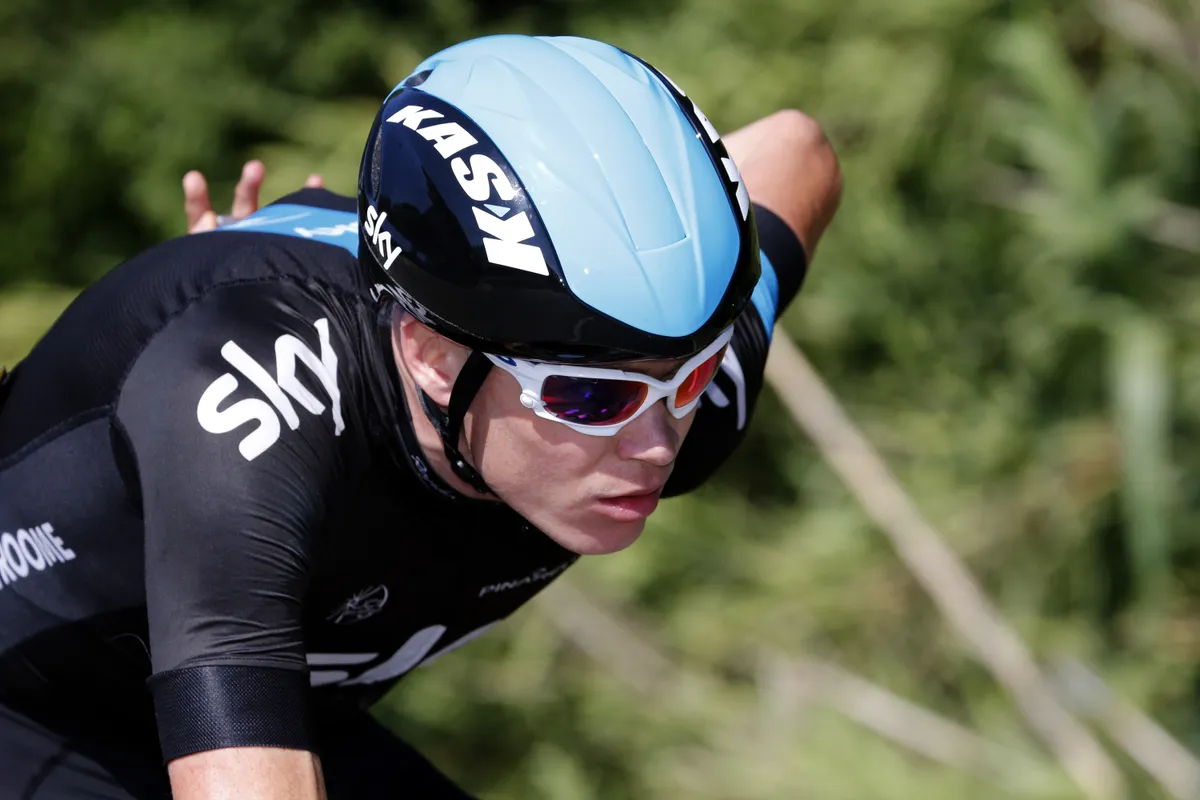
While it might not be as fast as Vingegaard’s S5 frame, that wavy Dogma silhouette is iconic of an era when Team Sky dominated the Tour.
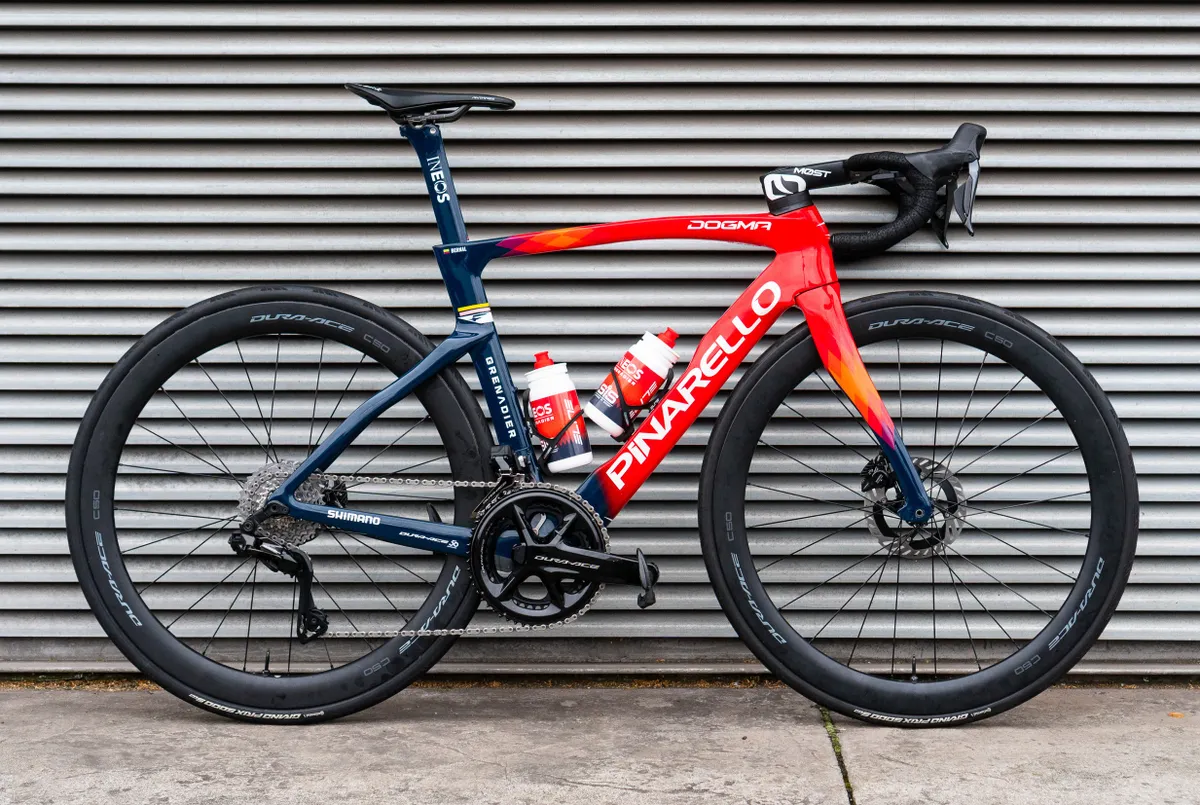
Since then, the Dogma has had a bit of an aero makeover, but Pinarello still only offers Team Ineos-Grenadiers one bike for all road stages in the form of the Dogma F.
Wider wheels
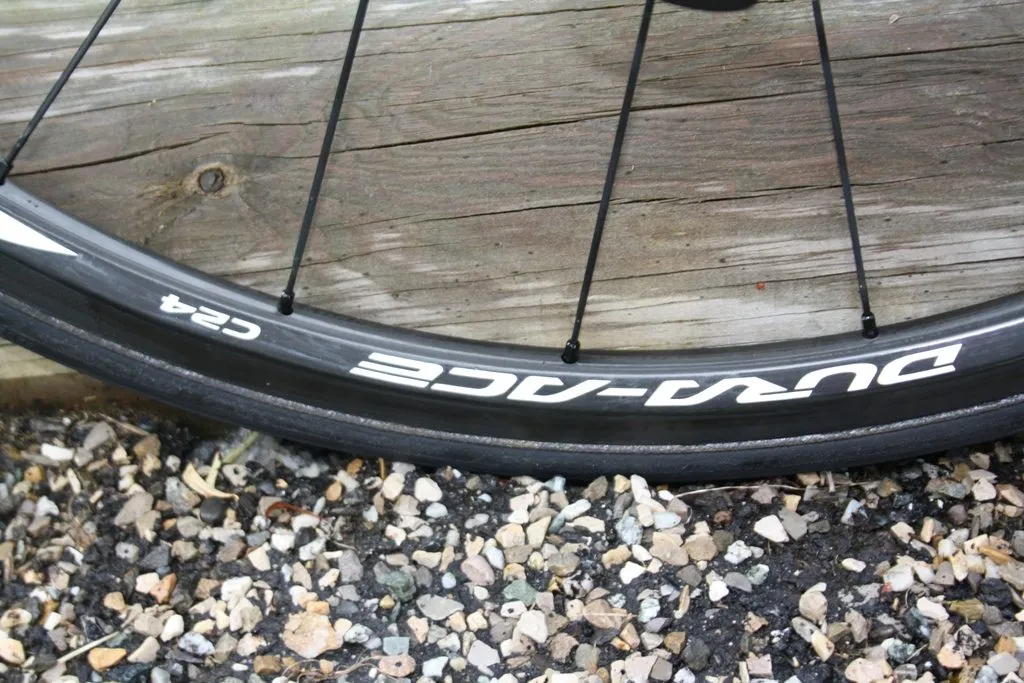
Deep carbon wheels will make any bike look fast, but manufacturers have been developing their hoops a lot since 2013 to eke out every last bit of speed.
Froome used the tubular version of Shimano’s Dura-Ace wheels.
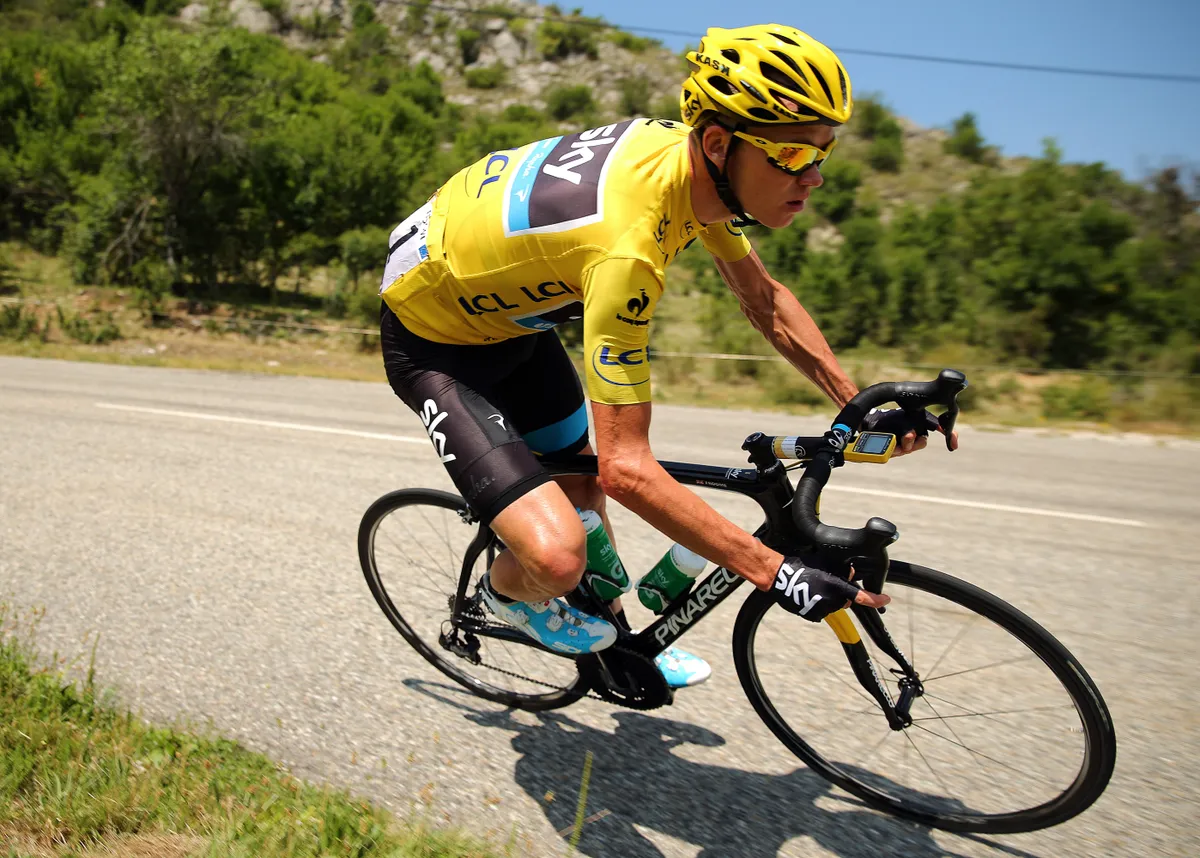
On high-mountain days, Froome used the 1,100g C24 wheelset to bring his bike weight down as close as possible to the UCI’s 6.8kg minimum weight limit.
He also had the option of the 35mm-deep C35 wheelset, but mostly switched to the deeper C50 wheelset for faster days. These featured a conservative rim design that was designed to work with the narrow tubular tyres of the time.
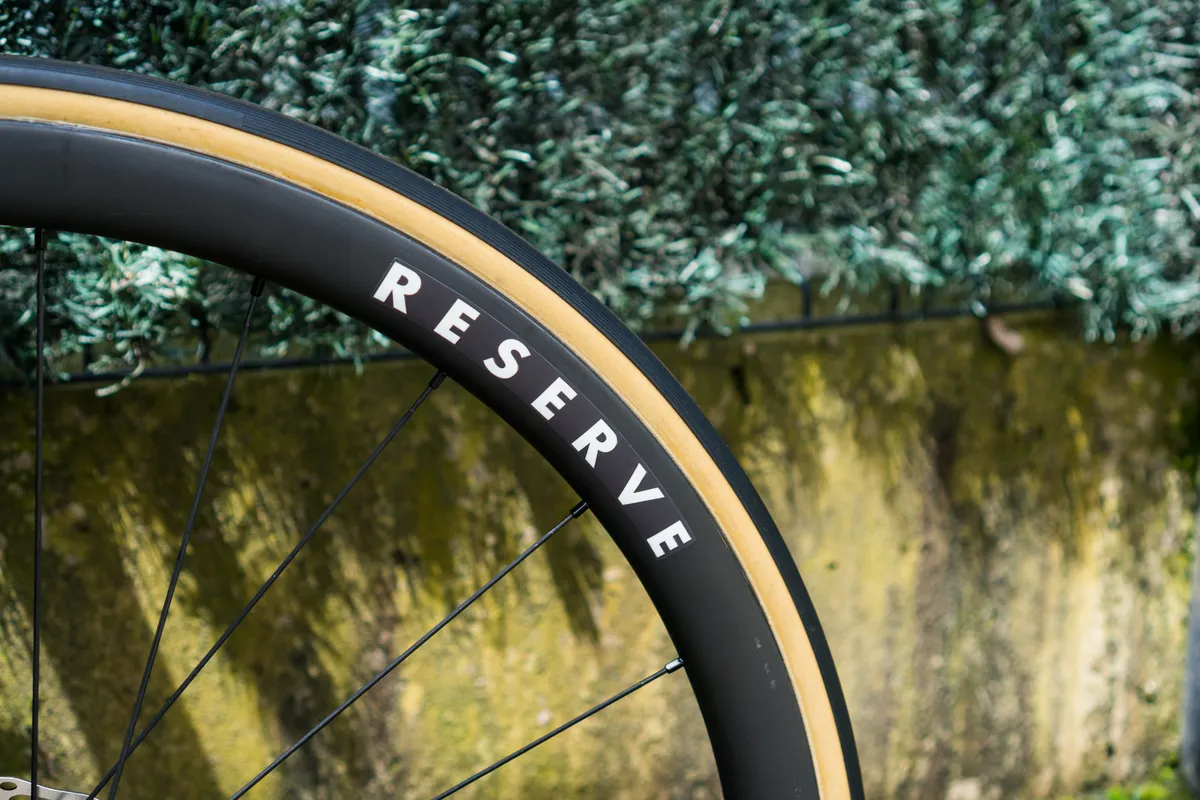
In some respects, not much has changed. We saw Vingegaard using a set of 24mm-wide tubular tyres on his S5 for the hilly opening stages in Bilbao, to keep the weight down. Weight weenie-ism isn’t gone completely from pro cycling just yet.
However, Reserve is the wheel sponsor of Jumbo–Visma and Vingegaard then switched to the brand’s 40|44 wheelset with Corsa Pro TLR or Vittoria’s time-trial-specific Corsa Speed TLR G2.0 tubeless tyres.
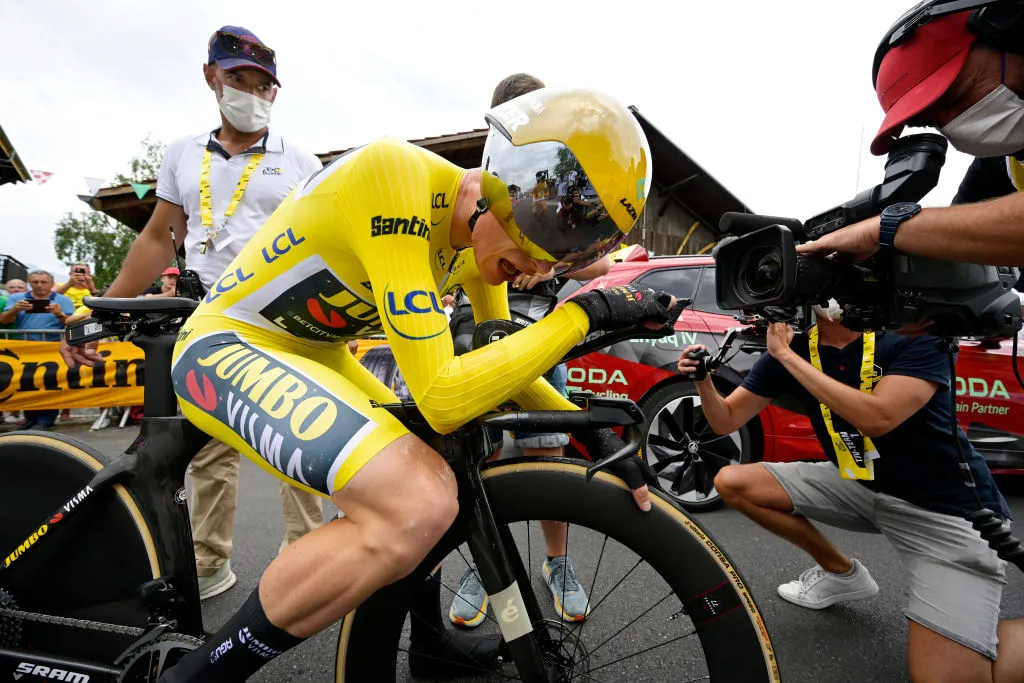
The inner rim width of 25mm for the Reserve shows just how much wider road bike wheels are today. Froome’s wheels weren’t even that wide externally (24mm) and, as we’ll discuss later, wheels today are mostly tubeless.
Integrated handlebars
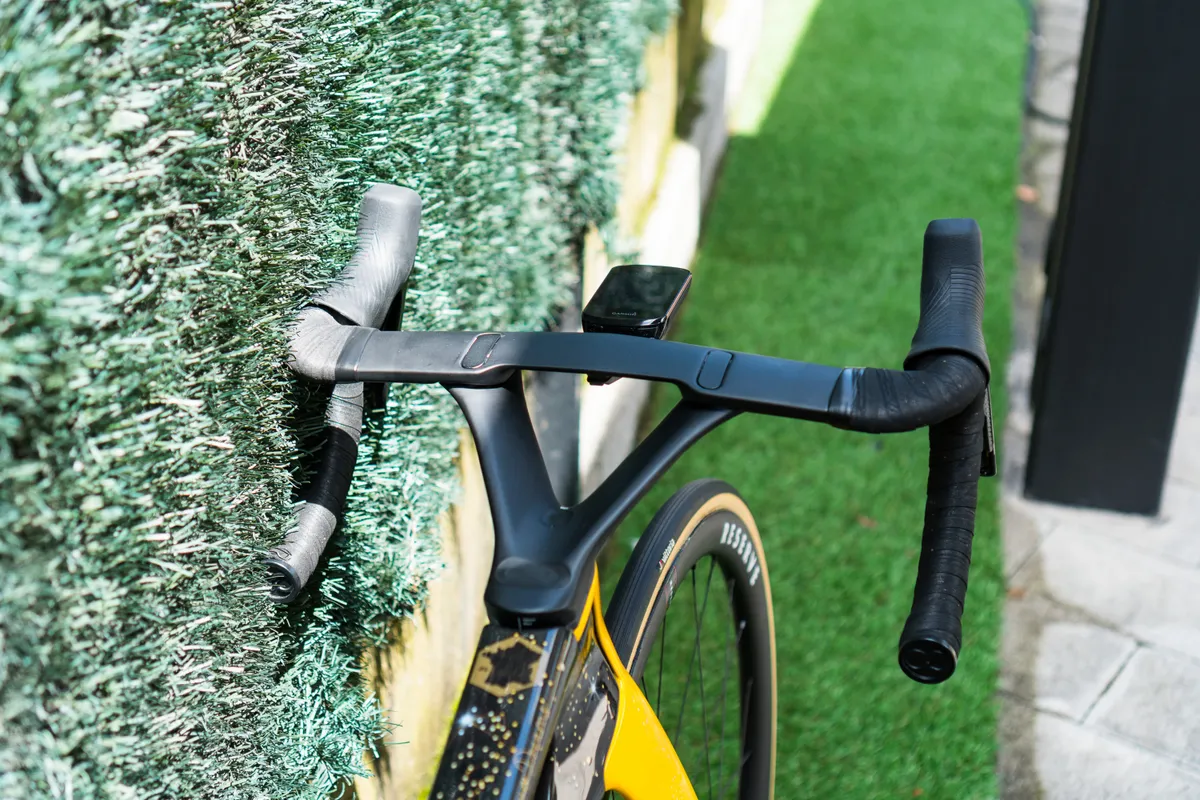
Aerodynamic know-how has also impacted the front end of bikes in a way that we didn’t see on Froome’s 2013 bike.
For Froome’s first Tour de France victory, he used a Pro Vibe bar with a traditional round shape, paired with a very precise 126mm alloy Pro Vibe stem.

When you take a look at this setup, with the small spacer above the stem, a generous upper bearing cover and the old-style Di2 junction box sitting under the stem, it is a visibly more cluttered look than Vingegaard’s.
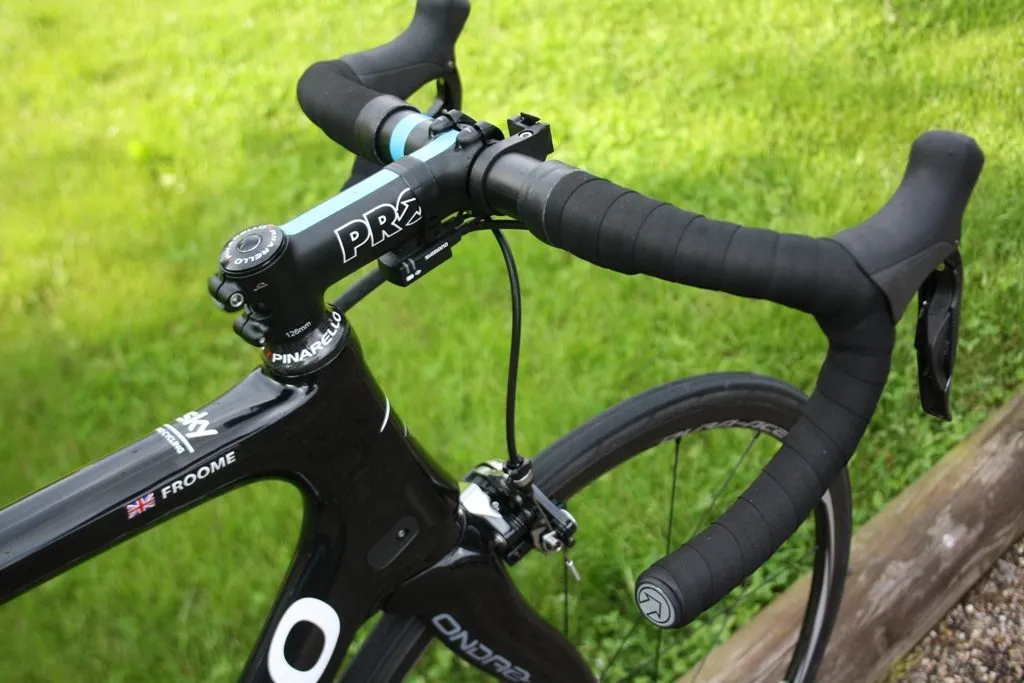
Wireless gears and hydraulic disc brakes have given bike designers much more freedom to make front ends sleeker, but there is something fantastically old-school about Froome's setup.
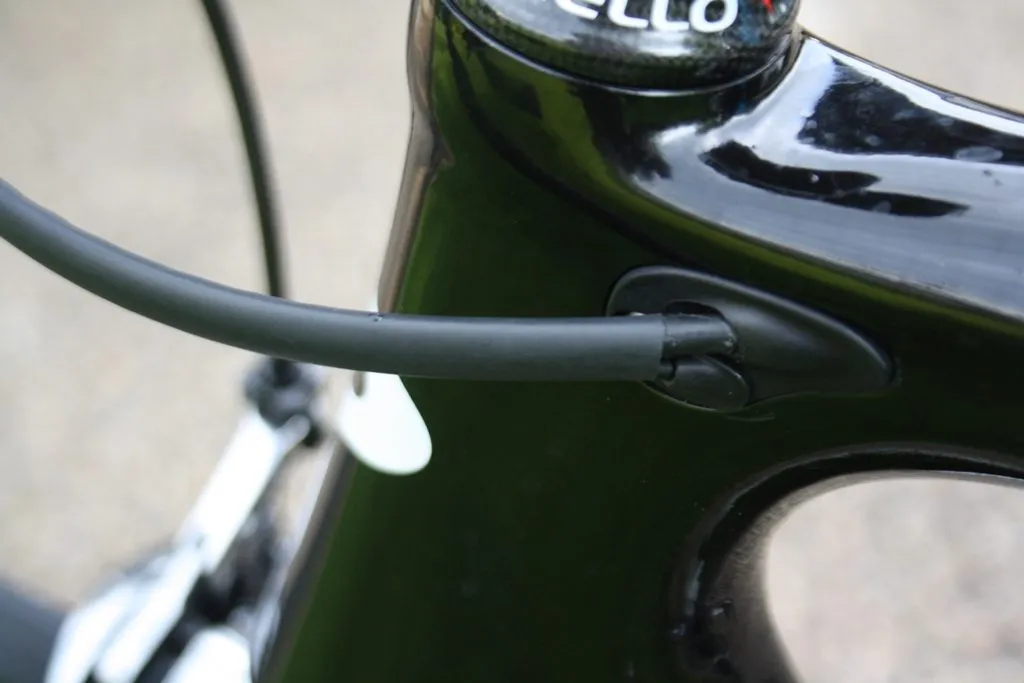
Vingegaard’s R5 looks a little more traditional, but the bike still features a fully integrated, one-piece cockpit from Vision.
Integration is the name of the game in 2023.
Disc brakes
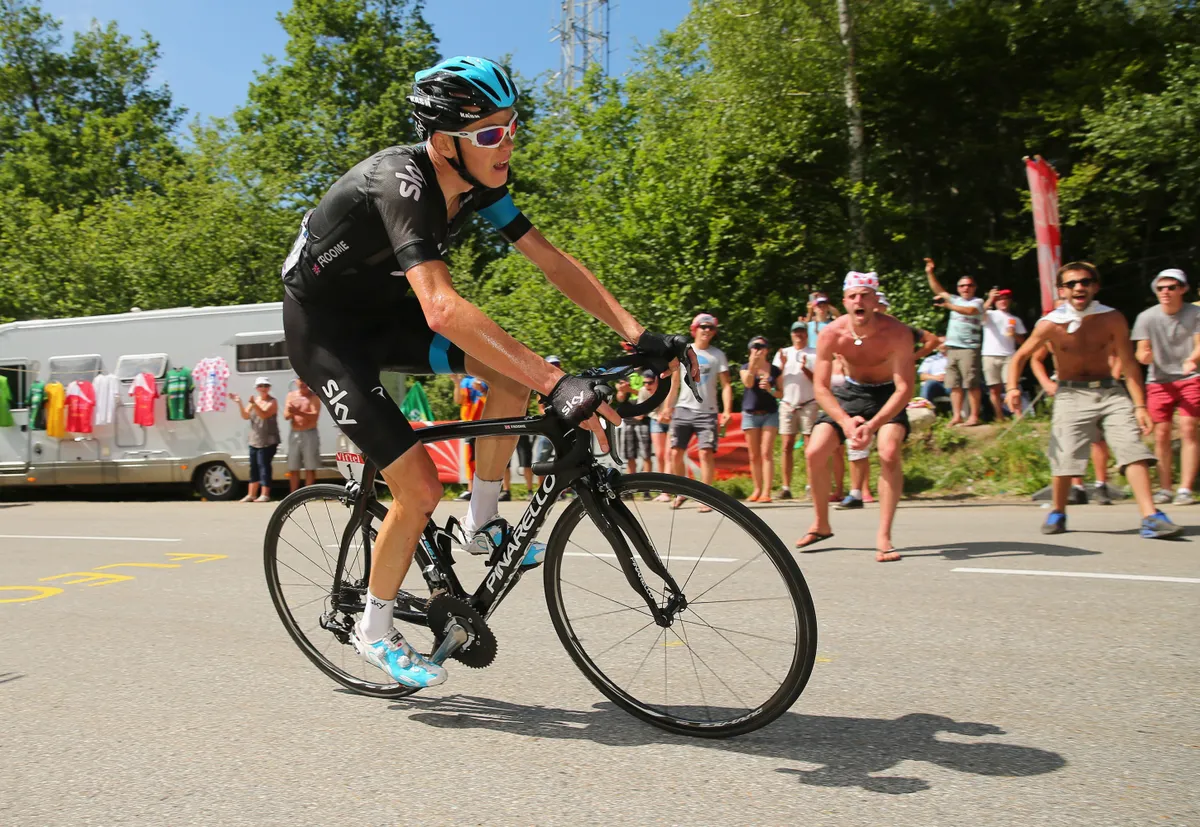
Many of the changes we’ve noted, from wider rims to integrated front ends, have been helped along by the introduction of disc brakes.
Froome’s 2013 bike, along with every bike in the peloton back then, sported rim brakes, but every bike in the 2023 Tour de France used disc brakes. That’s been the case since Tadej Pogačar used rim brakes at the 2021 race.
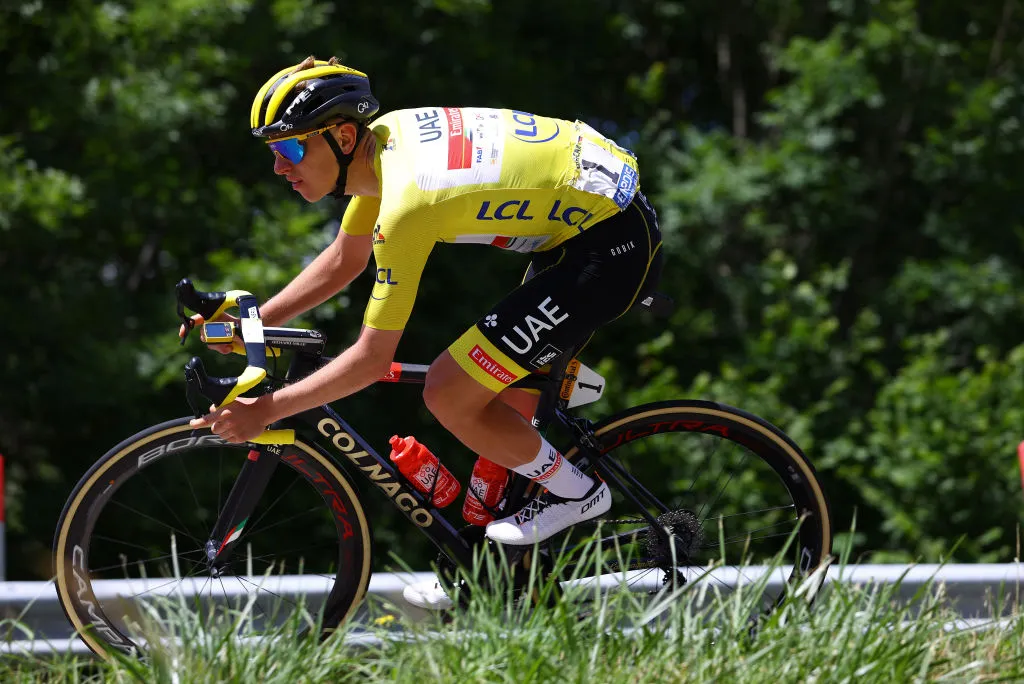
Alongside better braking, disc brakes have also influenced frame design, with seatstays and forks being freed somewhat from the requirements of supporting a rim brake.
Froome’s bike used the Shimano Dura-Ace 9000 rim brake calipers with carbon-specific pads.
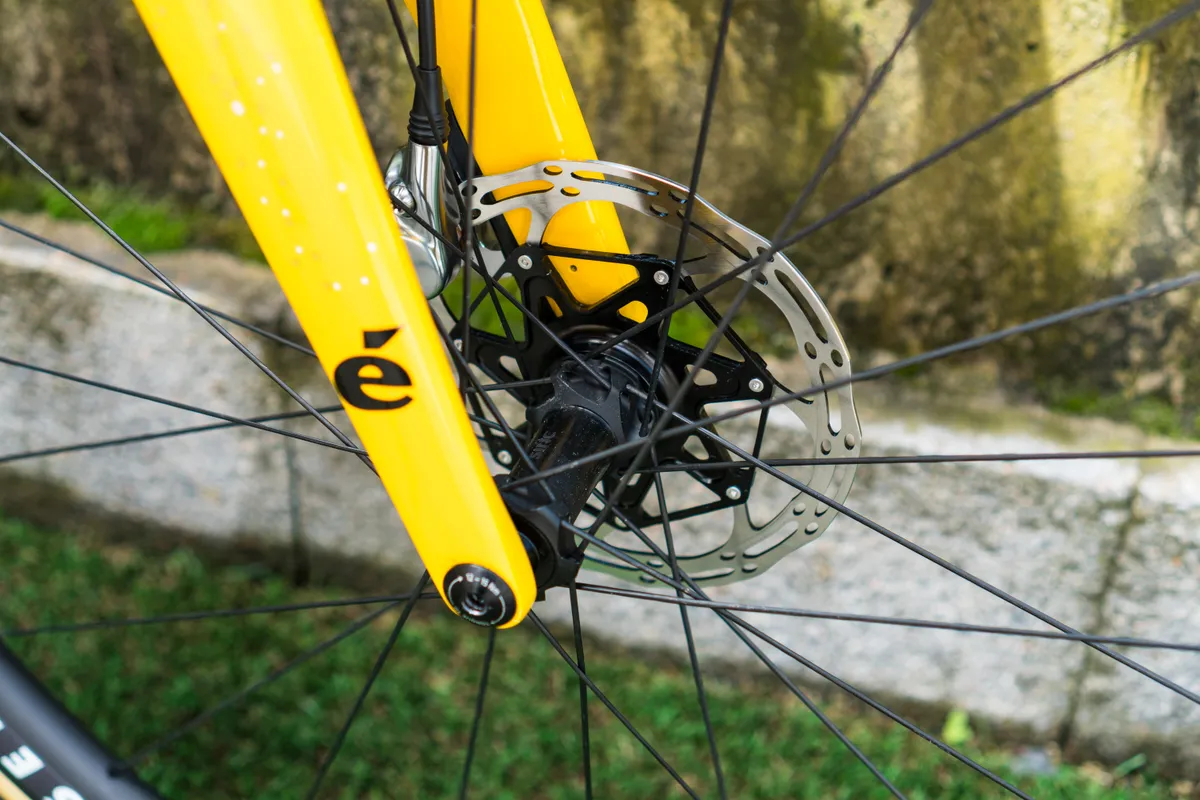
Vingegaard’s bike, meanwhile, has SRAM Red disc brake calipers.
However, disc brakes have also opened the door to another change.
Wider, tubeless tyres
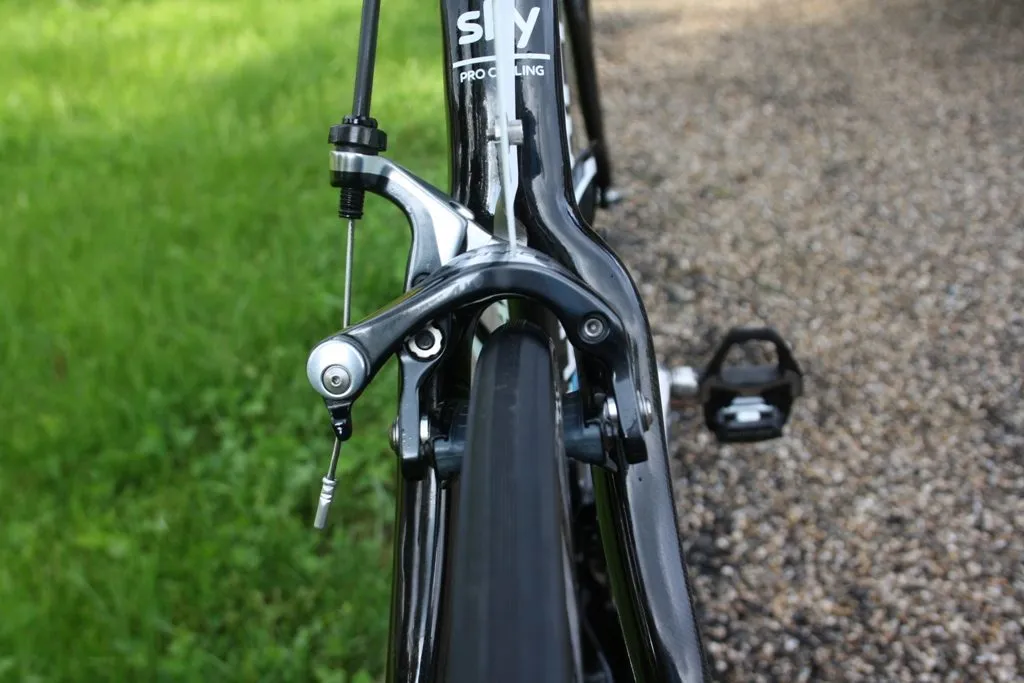
Most rim brakes struggled to fit anything wider than a 28mm tyre. That was fine when road racers used 23mm and 25mm tyres, but the team mechanics had to get inventive when riders asked for bigger tyres for the cobbled Classics.
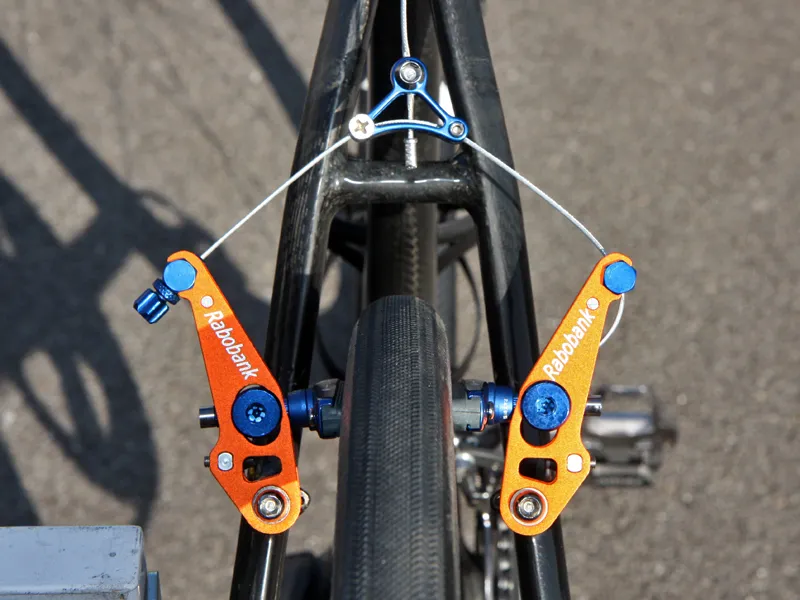
Now wide tyres are standard, and tubeless tyres, paired with a 25mm inner width on wheels such as Vingegaard’s, will sit a little wider than stated on the sidewall.
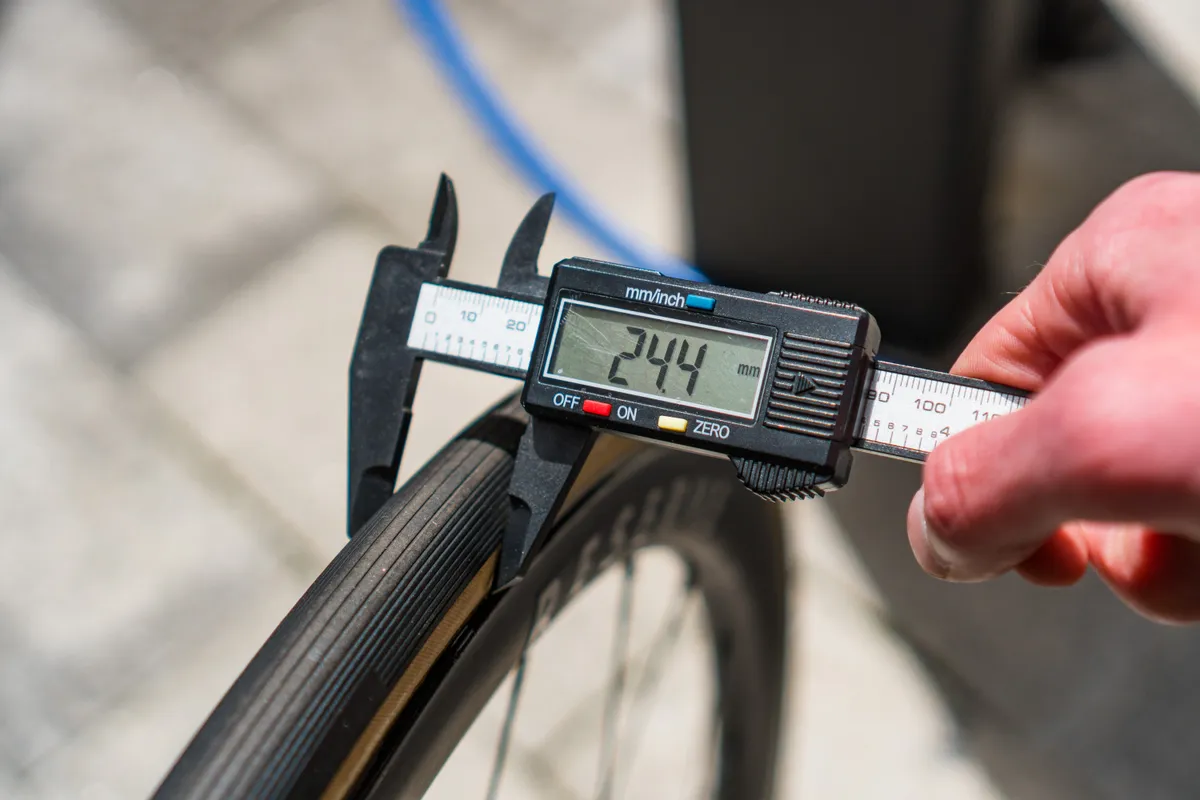
As a result, we saw some incredibly wide tyres at the start of this year’s Tour de France, including tyres measuring wider than 32mm on Pogačar’s bike.
Riders commonly use 28mm and 30mm tyres these days and we’ve seen a growing number of time-trial tyres being used in general road stages. Riders are doing everything possible to save some precious watts.
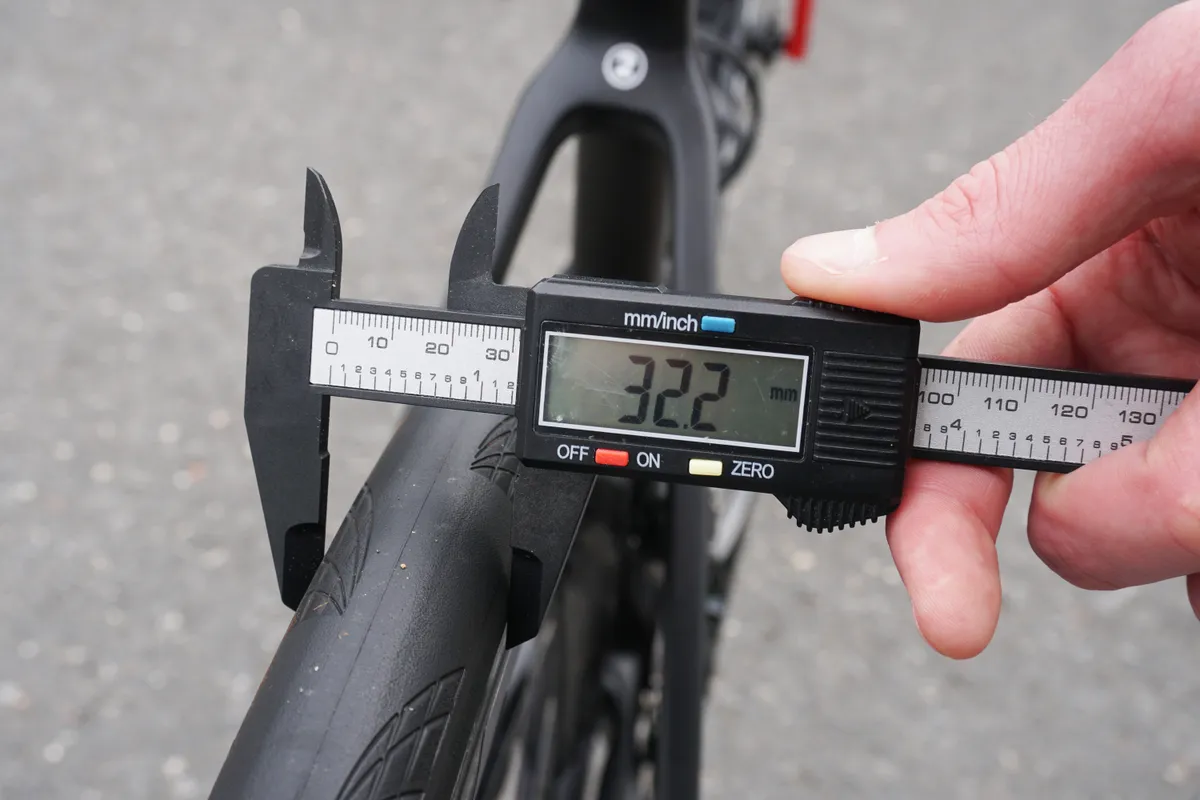
It’s worth noting that wide tubeless tyres haven’t taken over completely, though. As we saw on Vingegaard’s bike at the Grand Départ, narrow tubs are still used on some stages – they’re just not the standard, like they were in 2013 – and the Dane switched to wider tubeless tyres for stages later in the race.
Bigger gears and 1x
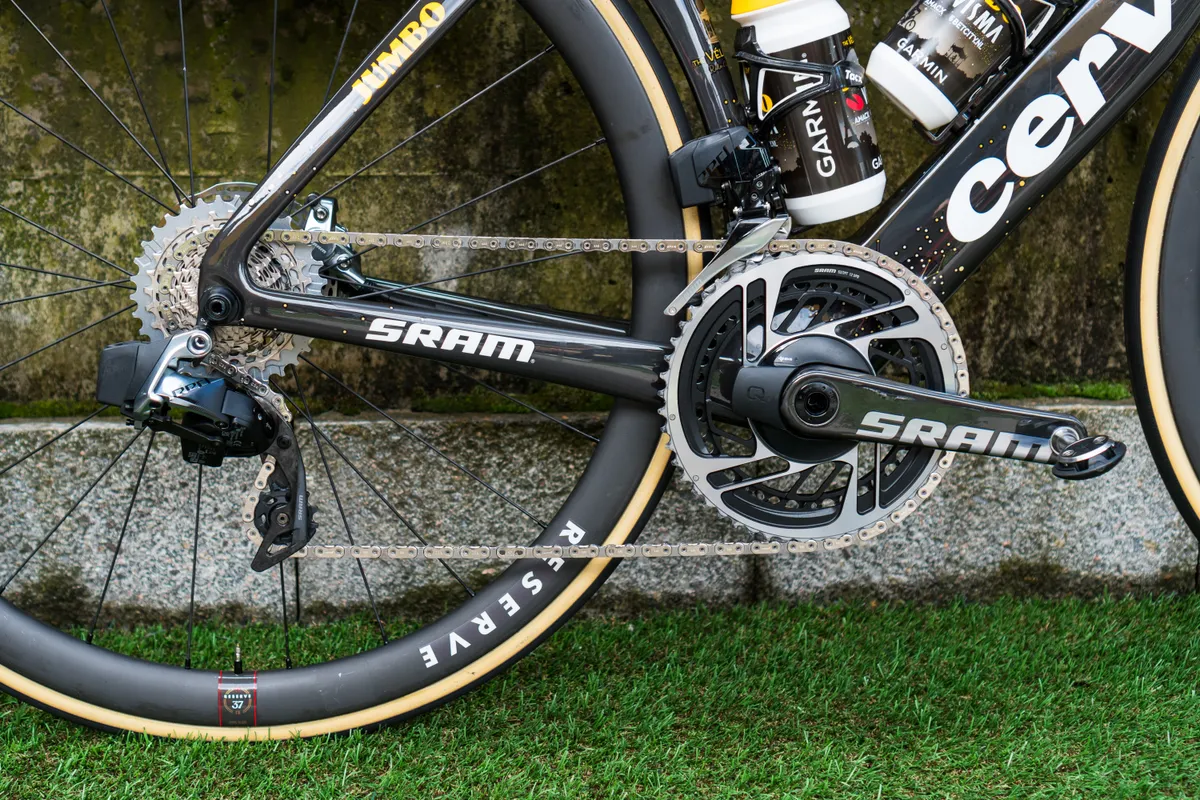
With all component brands now offering 12-speed groupsets, riders are opting to run bigger gears all of the time.
Vingegaard’s bike had 52/39t chainrings paired with a wide-ranging 10-33t cassette out back.
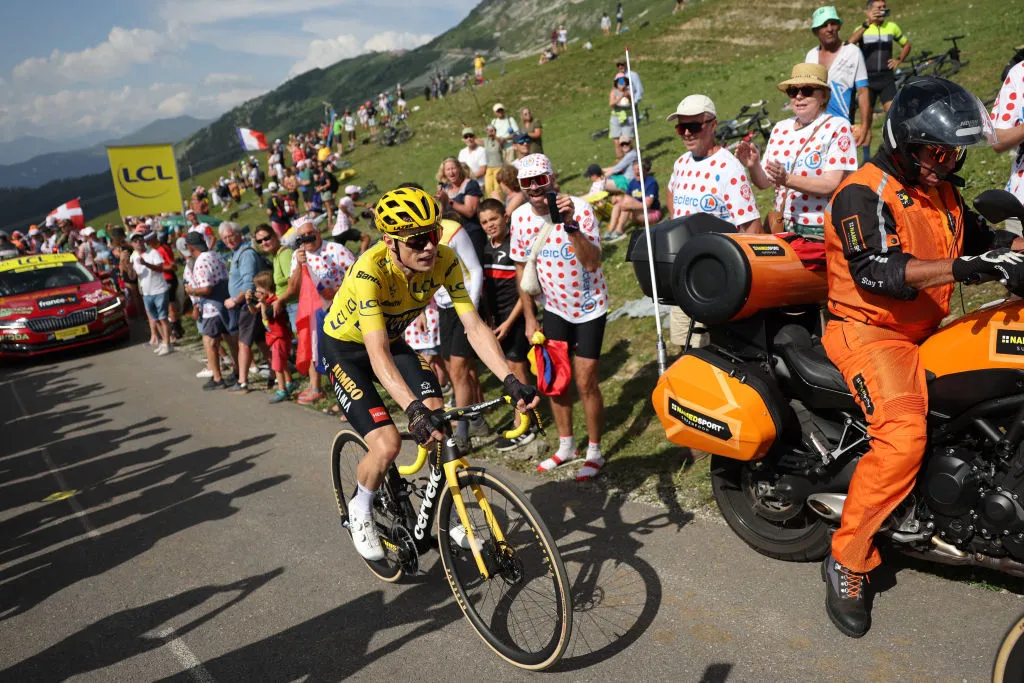
SRAM’s use of the small 10t cog on the cassette means he has a massive top gear – bigger, in fact, than the 54x11t top gear now seen commonly on Shimano Dura-Ace – while his 39x33t lowest gear is far smaller than Froome’s 39x28t.
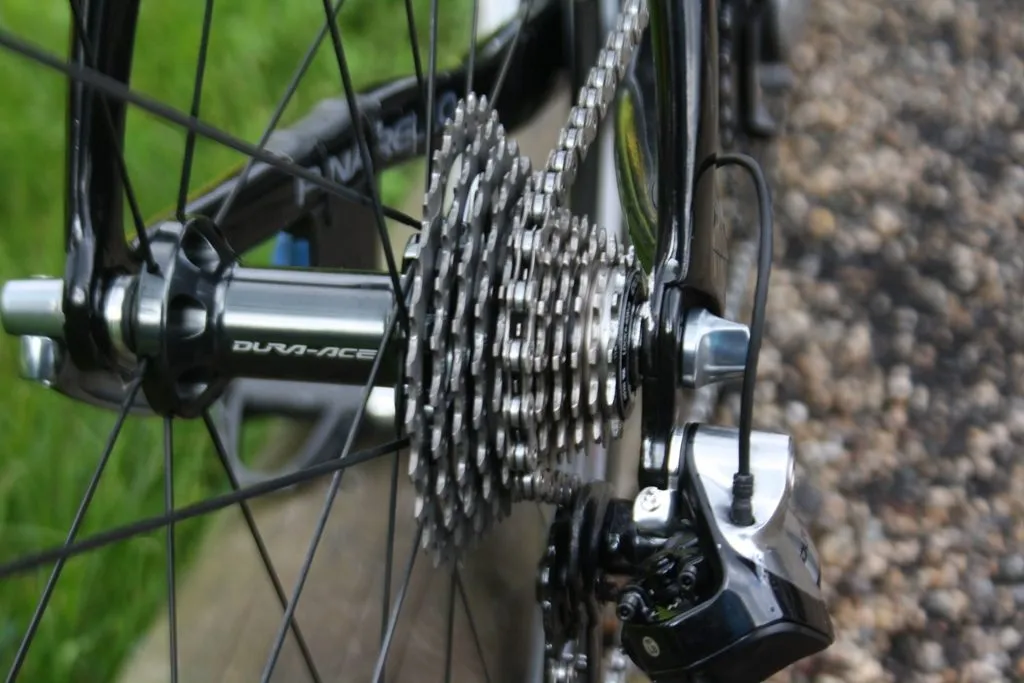
As a result, you’d think the current crop of road racers would be changing their gearing during the race less frequently. Generally, that’s the case, and certainly for Shimano-sponsored riders, this is largely true. However, for SRAM riders, there’s one extra consideration to make – and that is whether you ditch your front derailleur all together and use a 1x setup.
Vingegaard and Wout van Aert used 1x drivetrains for the hilly opening stage in Bilbao, before returning to a single chainring for Vingegaard’s yellow bike on the final stage into Paris.
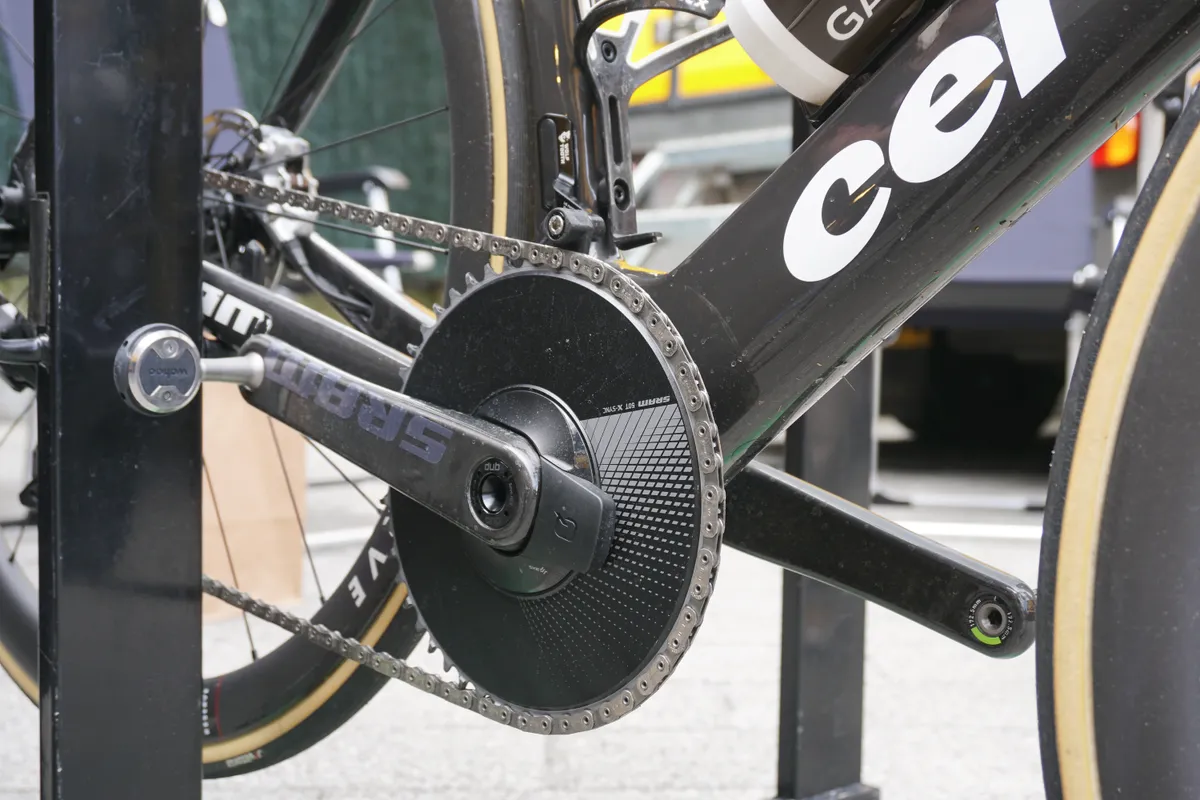
While a 1x drivetrain might very occasionally be used on a time trial bike in 2013, it was previously unheard of to use one on a road stage of the Tour de France.
Oh, and Lidl-Trek’s Mads Pedersen won stage eight on 1x, too. Is the tide turning back in the favour of 1x?
Au-revoir to Osymetric chainrings
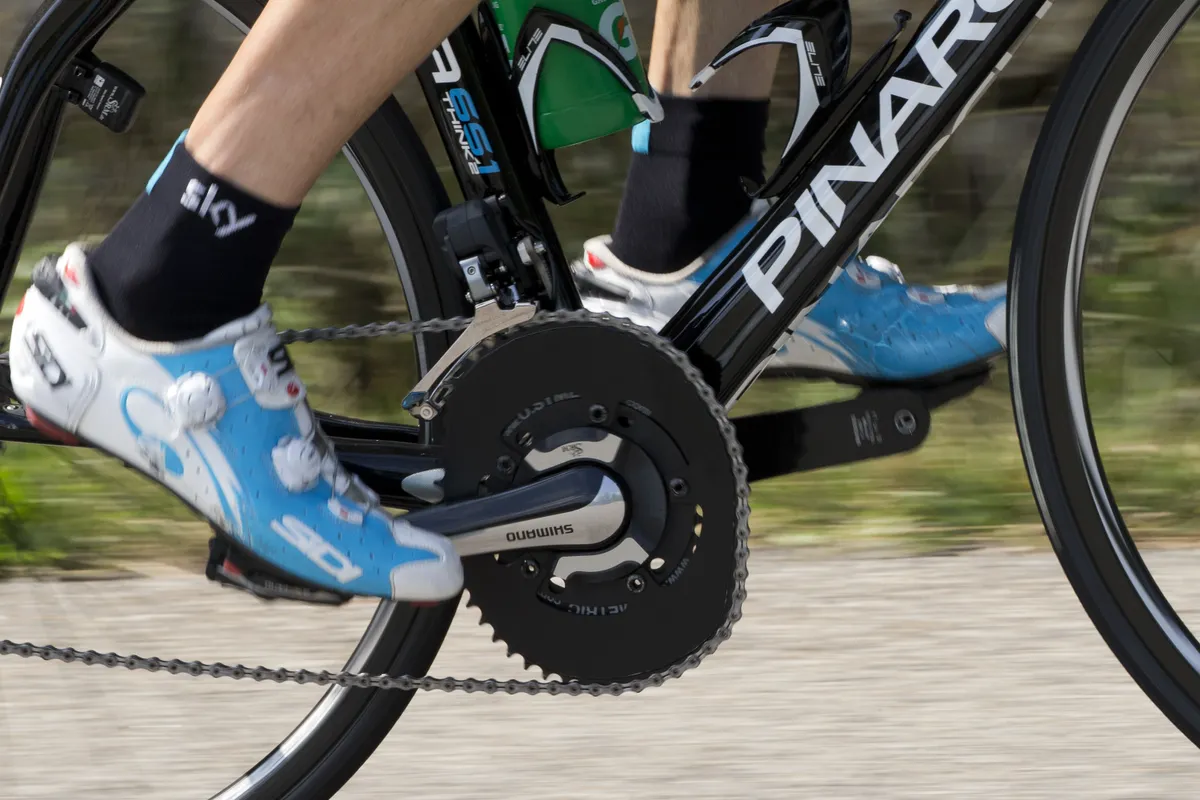
While we’re looking at the crankset, Froome’s bike has two more notable features. The first is the SRM power meter.
These accurate and reliable power meters have gone slightly out of fashion, being replaced by models from the groupset brands, such as SRAM and Shimano, or other third-party companies such as 4iiii and Wahoo.
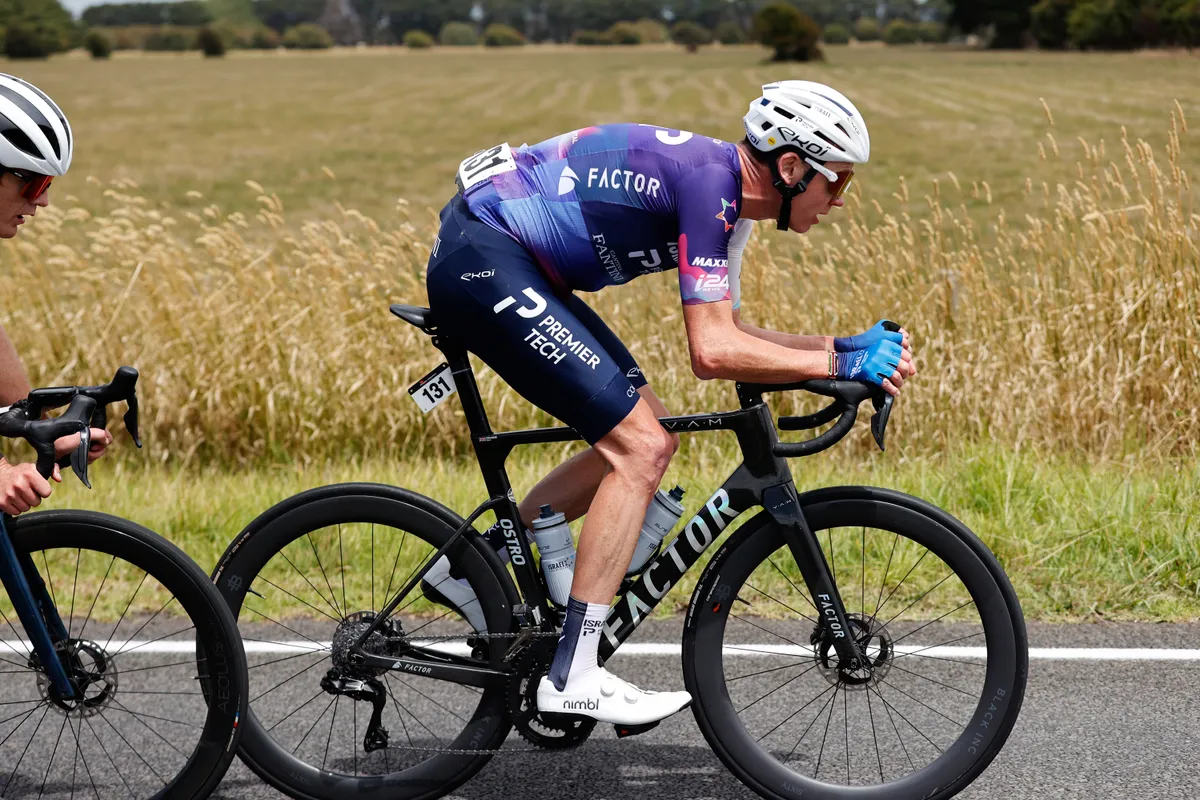
While SRM hasn’t completely gone from the peloton, ovalised chainrings seem to have been a fad that has died out. Like the oval rings of Bradley Wiggins before him, Froome’s chainrings were designed to eliminate the dead spot in his pedal stroke.
While they can’t have done him too much harm, and Froome continues to use them, oval chainrings were nowhere to be found at this year’s Tour de France.
In fact, pro bikes are much more likely to conform to sponsor requirements in 2023 than 2013.

